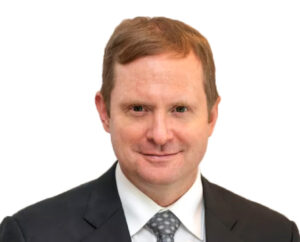Case details
Plaintiff: Future attendant care needed after motorcycle crash
SUMMARY
$23965999
Amount
Verdict-Plaintiff
Result type
Not present
Ruling
KEYWORDS
anxiety, blunt force trauma to the head, brain, brain injury, depression, eye, face, fracture, head, hip, hip head, impairment, mental, nose, psychological, sensory, speech, strabismus hip, stroke, traumatic brain injury, vision
FACTS
On Sept. 7, 2016, plaintiff Felipe Leon, 30, a warehouse worker, was motorcycling to work, traveling on westbound Washington Street, in Stockton. As he entered the intersection with Ventura Avenue, the front wheel of his motorcycle struck the front, left wheel of a sport utility vehicle operated by Vernon Draper, who was attempting to make a left turn from eastbound Washington Street onto northbound Ventura Avenue. Leon’s helmeted head subsequently hit the right A-pillar of Draper’s SUV. Leon sustained to his head, face and right hip. Leon sued Draper; Draper’s employer, Central California Traction Co. Inc.; and Central California Traction’s parent corporation, Union Pacific Railroad Co. Inc., which had leased Draper’s SUV. Leon alleged that Draper was negligent in the operation of his vehicle and that Central California Traction and Union Pacific Railroad were vicariously liable for Draper’s actions while in the course and scope of his employment. Plaintiff’s counsel argued that Draper failed to yield the right of way to an oncoming motorist and made an unsafe turn directly in front of Leon’s path, causing the collision. Counsel also argued that Draper was acting as an agent of Union Pacific Railroad at the time of the collision. Specifically, plaintiff’s counsel contended that Draper was the general manager of Central California Traction and that Draper was employed by Union Pacific Railroad and had never been received a single paycheck from Central California Traction. Counsel also contended that Union Pacific Railroad owned a 2/3 interest in Central California Traction and controlled four out of six places on Central California Traction’s board. Plaintiff’s counsel further contended that Union Pacific Railroad was the sole lessee of Draper’s pickup truck and that, by contract, did not have the ability to assign the lease to Central California Traction. In addition, counsel contended that Union Pacific Railroad paid the insurance policy for Draper’s SUV. Union Pacific Railroad’s counsel initially asserted that longstanding law required Union Pacific Railroad to be treated as a separate entity than its subsidiary, Central California Traction. Counsel also denied that Central California Traction was Union Pacific Railroad’s alter ego. After a failed summary judgment motion, Union Pacific Railroad’s counsel moved, in limine, to bifurcate the trial regarding the alter ego issue. The motion was granted, and Judge Abdallah held a one day court trial on the issue prior to the jury trial. Judge George Abdallah found that the corporate veil had been pierced and that Central California Traction was the alter ego of Union Pacific Railroad. Thus, the matter proceeded against Union Pacific Railroad, Central California Traction and Draper. Shortly before trial, the defendants admitted that Draper was at fault for the collision and that Union Pacific Railroad and Central California Traction were liable for Draper’s actions., Leon sustained blunt force trauma to his head, resulting in multiple facial fractures and a severe traumatic brain injury. As a result, he suffered blood clots, double vision, frontal lobe syndrome, and left-sided hemiplegia secondary to a stroke. He also sustained a right hip fracture. An ambulance took Leon from the scene of the accident and transported him to San Joaquin General Hospital, in French Camp, where he underwent the placement of an external ventricular drain in his brain to relieve pressure. He also underwent the placement of an inferior vena cava filter for blood clots, the placement of a percutaneous endoscopic gastrostomy feeding tube in his stomach and the placement of a tracheostomy tube in his neck to help him breathe. In addition, he underwent facial reconstruction with hardware, two lip revision surgeries, a strabismus eye surgery to straighten his left eye and hip surgery with hardware, which included a reduction to put his hip back into the socket. Leon claimed that he will need 24/7 attendant care services for the rest of his life. He also claimed that he needs three future facial surgeries, including one to fix the malunion in his upper jaw, one to do a bone graft in his upper jaw and one to do a bone graft in his lower jaw, as only then can he get dentures. Leon got married after the subject accident, but he claimed that he continues to suffer from posttraumatic depression and anxiety. It was undisputed that he can no longer work. Plaintiff’s counsel argued that the past care provided by Leon’s spouse was compensable under Hanif v. Housing Authority, 200 Cal. App. 3D 635, 644-645. Thus, Leon sought recovery of past and future medical costs, the cost for past and future attendant care services, and damages for his past and future pain and suffering. According to defense counsel, plaintiff’s counsel asked the jury during closing arguments to award Leon $103 million. Defense counsel contended that Leon made a remarkable recovery, noting that Leon was able to get married and take a vacation to Hawaii. They argued that Leon would not actually require 24/7 attendant care services and that, instead, the actual amount of care that Leon would need today was 2.5 hours per day, which is the amount granted by governmental agency for an in-home supportive services provider. However, counsel contended that Leon could get services for four hours a day, starting now (due to agency minimums), and that his services could be increased to six hours per day at age 50. They further contended that Leon’s services could be increased to eight hours per day for the next 10 years of life after age 50 and then increase to 24/7 care for the last five years of his life. In response, plaintiff’s counsel presented the video deposition of the defense’s retained neurology expert, who opined that the amount of attendant care needed, if Leon lived alone, would be 10 hours per day now. The expert also opined that Leon’s services could be increased to 12 hours per day at age 50 and then increased to 14 hours per day for the next 10 years of life. The expert further opined that Leon’s services could be increased to 24/7 care for the last five years of his life. The neurology expert testified that the lower numbers were based on the assumption that Leon was living with his wife. The plaintiff’s expert economist used the defense’s neurology expert’s concession, along with the concessions regarding three future facial surgeries (obtained through the defense’s expert maxillofacial surgeon) and a future hip replacement surgery to create an alternate life care plan for Leon using the defense’s experts’ numbers. The plaintiff’s expert economist then presented a life care plan for the defense that was $2.1 million to $3.6 million greater than what was being presented by the defense (depending on if the attendant care was being done through private hire or agency hire).
COURT
Superior Court of San Joaquin County, San Joaquin, CA
Similar Cases
Negligent tire repair caused serious rollover crash: family
AMOUNT:
$375,000
CASE RESULT:
Plaintiff won
CATEGORY:
Personal Injury
Steep, winding road caused multiple truck crashes: plaintiffs
AMOUNT:
$32,500,000
CASE RESULT:
Plaintiff won
CATEGORY:
Personal Injury
Dangerous highway caused fatal multiple vehicle crash: suit
AMOUNT:
$18,681,052
CASE RESULT:
Plaintiff won
CATEGORY:
Personal Injury
Applicant claimed future care needed after fall from roof
AMOUNT:
$3,500,000
CASE RESULT:
Plaintiff won
CATEGORY:
Personal Injury
Roofer claimed he needs future care after fall from roof
AMOUNT:
$6,000,000
CASE RESULT:
Plaintiff won
INJURIES:
- anxiety
- brain
- brain damage
- brain injury
- cognition
- depression
- epidural
- extradural hematoma
- face
- facial bone
- fracture
- head
- headaches
- hearing
- impairment
- insomnia
- loss of
- mental
- nose
- psychological
- scapula
- sensory
- shoulder
- skull
- speech
- subdural hematoma
- tinnitus
- traumatic brain injury
- vision
- Show More
- Show Less
CATEGORY:
Personal Injury
Plaintiff: Improperly trained delivery personnel caused injuries
AMOUNT:
$4,875,000
CASE RESULT:
Plaintiff won
CATEGORY:
Personal Injury




